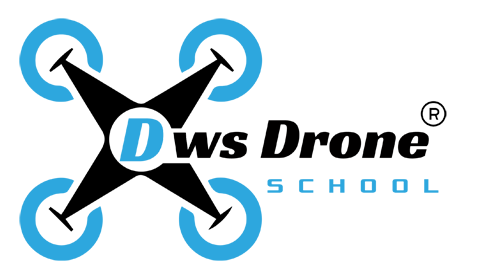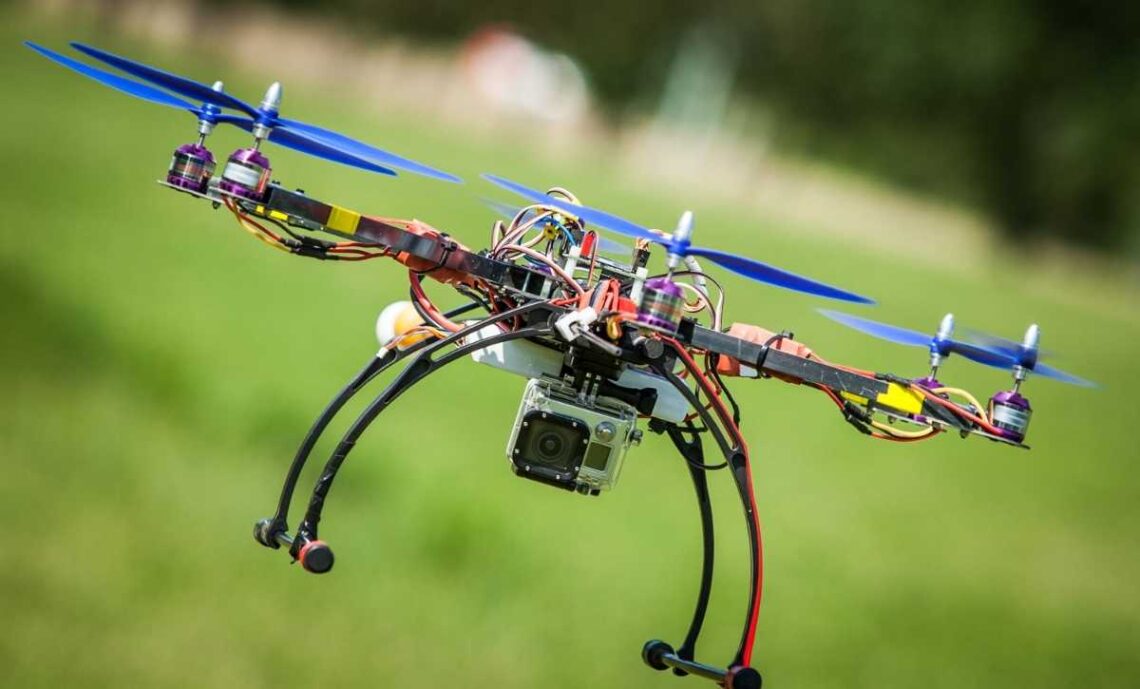Using drones for industrial purposes is hardly a new concept. Ever since they were invented, drones saw ample use in many industries.
And, as the years went by, more and more industries found ways to use these nifty machines. In this article, we will explore these industrial uses for drones.
What kind of data can you collect with drones?
It is a common misconception that you can only collect standard visual data with drones. True, for most of their relatively short history, drones have been primarily used for traditional videos.
But, there are other uses for them that you might not be aware of.
Just like with standard cameras, drones can be equipped with special technology that helps them track various data.
This data can have substantial professional use, as it is not something that you can pick up with the naked eye. The ones that you need to be aware of are:
Thermal data
Asides from visual data, this is the most common type of data collected by drones. Thermal data has substantial use in many industries where an area’s heat is of primary concern.
Example
An obvious example is firefighters. They can use thermal data to quickly identify fires and their precise location within a home.
Furthermore, thermal data allows inspectors to identify areas where heat can cause problems, for instance, in railways.
LiDAR data
LiDAR data is collected through a sensor that users laser light. Precisely put, it measures the laser reflection. This allows it to create data points that are later used to create a map.
Example
If you want to create a 3D map of an area, you need LiDAR data. For project planning or progress tracking, LiDAR data is invaluable, as it provides info that would otherwise take you weeks to collect.
Furthermore, LiDAR lasers can penetrate through the surface of the earth. This allows them to be used for archeology as they can discover hidden objects and structures within a large area.
This, as you might guess, makes excavation much easier.
Multispectral data
To collect multispectral data, your drone has to measure reflected energy within several specific bands of the electromagnetic spectrum. When done correctly, this data gives a clear view of wildlife in an area, as bodies provide a completely different electromagnetic reading than plants.
Example
In agriculture, multispectral data is used to monitor plants and notice any health issues if they pop up. Law enforcement officers usually use them to find human remains in a large area.
Different industrial uses for drones
The examples we’ve listed above are only some of the ways many people use drones. The data that drones collect is valuable because of the different types acquired through various devices.
But also because of the unique mobility of drones themselves.
Since they are easy to control and relatively small, drones can give information from areas where it was previously either hard or outright impossible.
Therefore, we shouldn’t be surprised that many industries found a use for drones. And that, in the near future, we should see more to come.
Agriculture
Being able to oversee your field without having to drive through it sounds like a farmer’s dream. Luckily, with the large-scale development of drones, this dream became a reality.
Even relatively modest farmers see great use out of drones as they are able to give them valuable info in a short amount of time.
Not only are farmers able to keep track of their crops or animals, but they can also inspect their buildings. An issue with the barn or stable can be quite costly for a farmer.
And once you consider how easy it is to get a drone driver’s license, you will see why farmers find drones a cost-effective tool in the long run.
Nature preservation
There is more to preserving natural habitats than merely protecting them from industrialization. Of course, making sure that large companies don’t take advantage of natural resources is crucial.
However, in order to preserve natural habitats, people need to have an active role in their development. Well, this is where the use of drones shines.
To maintain and guide a habitat, you need to have oversight. Without it, you cannot tell whether your actions help or harm your environment. And you will have a hard time tracking the overtime changes of the site and whether you should take further steps.
Luckily, drones make all of this manageable with wide range surveillance. Furthermore, people use drones for reforestation, as they can deploy seeds in hard to reach areas.
Construction
Not long ago, keeping track of a construction site was an arduous endeavor. First, you need to create reliable maps of the local area to plan appropriately.
And then, you needed to use various tricks of the trade to monitor progress and ensure that everything is in order. Well, with the use of drones, both of these issues are made easy.
Drones allow for real-time surveys of commercial construction projects that often prove valuable for building large business centers. They can reach areas that you simply couldn’t access before, therefore allowing regular checkups and issue prevention.
All in all, drones have made construction projects much easier to plan and reliably execute.
Delivery of medicine
Drone technology hasn’t yet reached the point where drone delivery can be a standard service. However, certain industries do use them for emergency cases.
The most obvious example is the medical industry, where small deliveries can be the difference between life or death.
With drones, you don’t have to worry about rush hours or journey complexity. Instead, you can load your medicaments and have them delivered in record time. The only limit is the carry weight, which can be relatively low, depending on the drone type.
Creating movies
Areal shots are hardly a new thing in the movie industry. They have been around for at least 40 years, perhaps even more. However, the main difference is that, until recently, they had to be done with helicopters.
As you might guess, renting a helicopter and a crew to pilot it is far more expensive than simply using a drone. This is why we can now see aerial shots used in more amateur production movies.
It can be argued that drones haven’t brought anything new to the movie industry, at least for now. However, they have made what was already there much more affordable.
Insurance claims
One of the most challenging things that insurance companies have to deal with is claims. If a storm blows through a town, you can expect dozens, if not hundreds, of claims regarding roof and structural damage.
All that damage can be hard to verify and inspect, especially with a limited staff. Luckily, here again, we see where the use of drones makes things far more effortless and efficient.
Inspectors’ industrial uses for drones are plentiful. For instance, they usually consider the roof one of the most complex areas of a home to inspect.
And if you factor in the bad weather and homes with multiple floors, you can easily see why it is so.
Well, by using a drone, an inspector can check out a roof in a couple of minutes. Furthermore, if a claims officer needs to assess the full extent of the damage to a home, they will have a much easier time getting the complete picture via drone.
Finally, when it comes to car crashes, drones give a terrific view of the area. Knowing this helps insurance officers understand what happened and who is supposed to cover for the issue.
Security
While in the past, the police had to rely on helicopters for a birds-eye view of the situation, now drones serve this purpose.
With them, even private security companies can scope out an area and see whether there are any security threats.
Firefighters use drones to check thermal readings and figure out where the source of the fire is. This allows for better-coordinated efforts that require fewer resources and less risk. They can even use drones to find people within a building, which is beneficial for both policemen and firefighters.
Even in military use, drones have a significant purpose. So much so that there are branches of the military that deem it necessary to train veterans in drone use, and therefore update the military’s capabilities. Surveillance, reliable item delivery, and even air support are just some of the things that drones can provide.
Sewer and pipe maintenance
Finding problems within sewers can be surprisingly tricky. Not only do you have to suit up a team of experts, but they also need to spend the whole day scoping out the area to find the issue.
Sewer maintenance workers’ industrial uses for drones boils down to finding the issue within a fraction of the time.
Drones are both faster and smaller than people. This allows them to go through the sewage system quickly. And, with special equipment, drones can even notice issues that people otherwise couldn’t.


Add Comment